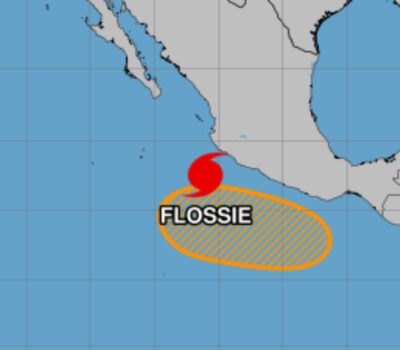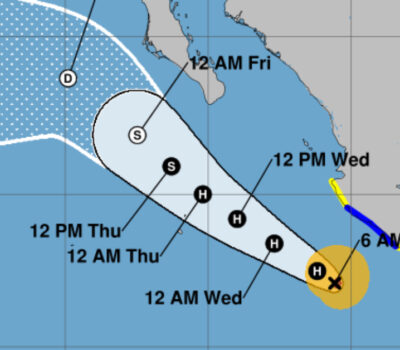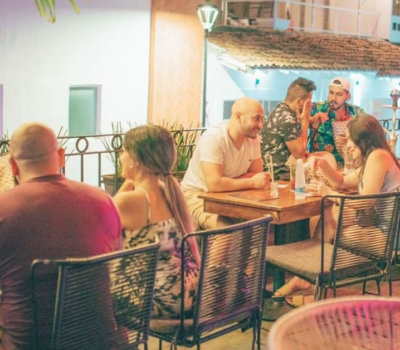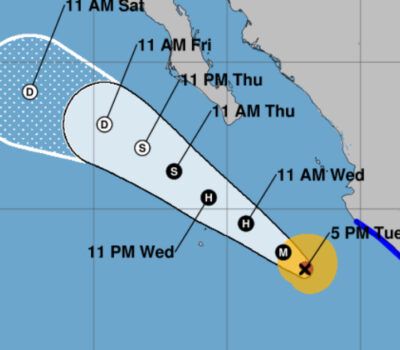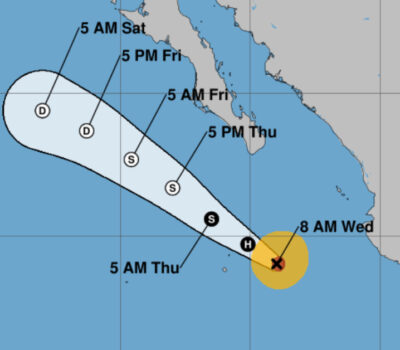Recently a local online English news site that has been serving Puerto Vallarta for over a decade published a story titled ‘Sayulita Sets a Low Bar for Female Fashion Standards.’ The article was an opinion piece by Ed Schwartz, a longtime resident of Sayulita.
This column drew harsh criticism from readers, enough to cause editors to remove the story from their news site and social media, only after defending the author’s views that stirred even more backlash for the site.
In the story, Mr. Schwartz admits he knows nothing about fashion but decides to take on the subject of female fashion, which being a female is something else we can assume he knows nothing about.

Schwartz informs readers that seeing a woman wearing a bikini, that apparently does not meet his standards of beauty, makes him sick. More specific, if he is at a café and sees a woman not pleasing to his eyes he needs to stop eating for a while to recover his appetite. According to Schwartz, only two in one-thousand women should ever wear a bikini. Apparently 998 out of one-thousand women are repulsive. Schwartz must not be able to eat much in a resort town with so many women wearing bikinis. Perhaps this is the secret behind his perfect slim physic.
The author also takes issues with women that have nice legs getting tattoos, he makes it clear that the legs were nice, as if that is important to his point. It would appear that the author views women as sex symbols and sexy women with unsexy tattoos somehow disrupt his viewing pleasure and objectifying of their bodies.
While Schwartz originally took most of the heat from female readers, and a hand full of male readers, the anger turned against the news publication when the editor told people to ‘lighten up’ and tried to convince readers it was funny.
“This is why I only visit your site for movie updates” said one reader. “Time to unlike this page and I hope others will too,” wrote another. “This news site has a long history of body shaming women, they encourage breast implants, print stories about the sexiest butts, and have offensive jokes about women,” said another agitated reader. One reader was even angry enough to call the ‘time of death’ for the publication.
Eventually the story was removed from the site, but once on the internet the ‘cat is out of the bag’.
This issue of ‘Body Shaming’ is the practice of telling a woman (or man) who has confidence in their body that they should have shame because they are not pleasing to someone else. Almost everyone on earth has something about their body that they would like to change; body shaming is taking that one thing and reminding the person every day that they are not good enough. Like publishing a photo of an unexpected woman walking down the beach and labeling her as too fat or ugly for the public to see, laugh, and ridicule.
Do you have kids? Did they ever make an art project or color a picture that they were so proud of when they gave it to you? Did you respond by telling them you have seen better or they shouldn’t be proud? Of course not, yet we feel the need to tell women who are proud that they need to rethink their personal opinions and use a better mirror.
Fashion is art, therefore it is always a subject open for debate, but a woman’s body is not. It is one thing to debate fashion, it is another thing to say the body of 998 women in a thousand make you sick enough that you need to stop eating. That isn’t a debate on fashion, it’s an attempt to tell most women they should be shameful of who they are. If you want to body shame women then say that is what you are doing, but do not try to write and publish a story under the false heading of fashion and then try to tell people it’s meant to be funny to offend women.
In the south, we say “That dog don’t hunt.”
Here are some thoughts about Body Shaming by Erika Vargas.
Did you ever stop and think about how often we are told to change our appearance? Magazines constantly offer tips about how to lose weight “in days,” appear slimmer “instantly,” and hide our “imperfections”… without actually knowing anything about us, much less our appearance. This is one example of body-shaming, and it is everywhere. Sitcoms so frequently use overweight characters’ bodies as the basis of many of the show’s jokes. It has become the norm to criticize aspects of our bodies as some type of bonding experience with friends – if we all hate our bodies; it somehow makes us feel connected and united. Body-shaming (criticizing yourself or others because of some aspect of physical appearance) can lead to a vicious cycle of judgment and criticism. Messages from the media and from each other often imply that we should want to change, that we should care about looking slimmer, smaller, and tanner. And if we don’t, we worry that we are at risk of being the target of someone else’s body-shaming comments.
Body-shaming manifests in many ways:
1) Criticizing your own appearance, through a judgment or comparison to another person. (i.e.: “I’m so ugly compared to her.” “Look at how broad my shoulders are.”)
2) Criticizing another’s appearance in front of them, (i.e.: “With those thighs, you’re never going to find a date.”)
3) Criticizing another’s appearance without their knowledge. (i.e.: “Did you see what she’s wearing today? Not flattering.” “At least you don’t look like her!”).
No matter how this manifests, it often leads to comparison and shame, and perpetuates the idea that people should be judged mainly for their physical features.
This leads to the question: if it has such harsh consequences, why is body-shaming so common? An example we often discuss at the Braintree Adolescent Intensive Outpatient Program (IOP) is dealing with conflicts with peers.
Why, when we are upset, annoyed, or intimidated by someone, do we default to criticizing their appearance? “Whatever, she’s ugly,” can be a go-to defense in these situations, particularly during adolescence and the young-adult years. In some ways, it feels easier to shoot for something that will hurt, like targeting physical appearance, rather than expressing what is really going on emotionally. Saying, “I’m really hurt by how my friend treated me,” or “I’m terrified of losing this friendship” opens us up and makes us more vulnerable, and therefore feels easier to bury underneath the body-shaming comments that rush to mind.
How do we challenge this? In situations like those listed above, expressing true feelings rather than physical criticisms can be a great first step. While recently discussing this with the Adolescent IOP, several patients admitted that it is hard to identify ways of expressing frustration without using body-shaming, as this has become an almost automatic response. Practice identifying why you are upset about a situation. For example, it’s unlikely that you’re mad at a friend because she’s breaking out, and more likely that you’re upset about a miscommunication or feeling of rejection. Practice thinking it, and eventually, verbalizing it.
Identify who in your life is body-positive – or even body-neutral. Think of people who celebrate their body for what it can do, and people who refuse to comment on others’ physical appearances. Spending time with these people can be especially helpful while you are struggling with your own internalized body-shaming, and help you view yourself – and others – more positively.
Confront those who perpetuate body-shaming. Once you’ve become more aware of your own body-shaming behaviors, you may notice how often your friends, family or co-workers do it. Talk to them. Discuss why it bothers you and help them see how it may also be hurtful to them.
Find something (or things!) you LIKE about your body. We spend so much time witnessing advertisements about how to make our eyelashes millimeters longer and how to get whiter teeth that it’d be nice to counter some of that by celebrating what we do have. Maybe, despite your body image struggles, you love a new hairstyle you discovered. Maybe you’ve noticed how much stronger you feel with balanced eating. Find something physical or nonphysical that makes you YOU and celebrate it every day.
[divider style=”solid” top=”20″ bottom=”20″]
About the author: Erika Vargas, MA, is the Adolescent IOP Clinician at the Walden’s Braintree clinic. She is trained in the Maudsley Method/Family Based-Treatment (FBT); and works with adolescents to decrease eating disorder behaviors with the support of their families. Article originally printed on waldenbehavioralcare.com.
[divider style=”solid” top=”20″ bottom=”20″]
This opinion was submitted by Connie Stevens.
Recently a local online English news site that has been serving Puerto Vallarta for over a decade published a story titled ‘Sayulita Sets a Low . . .

